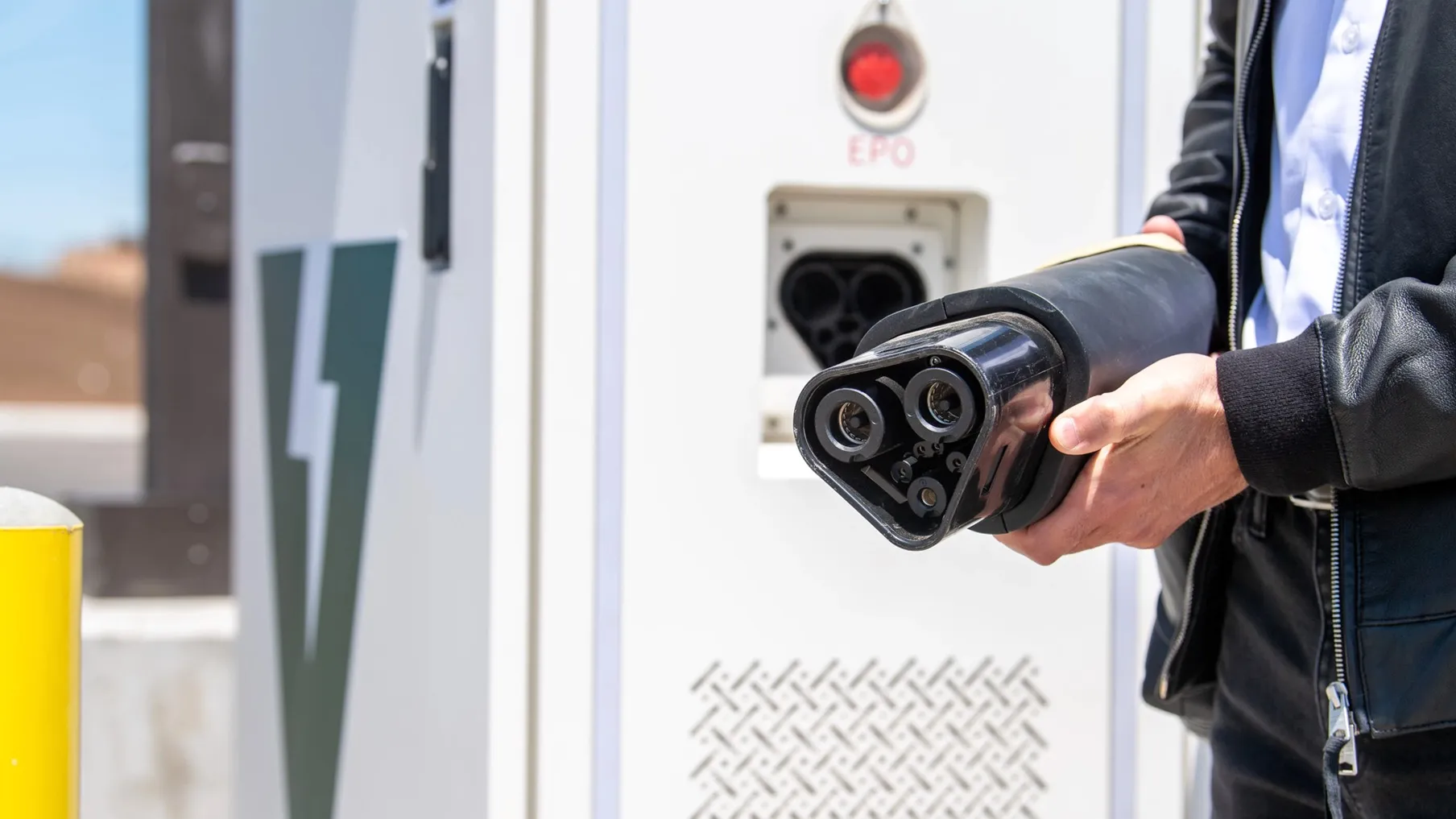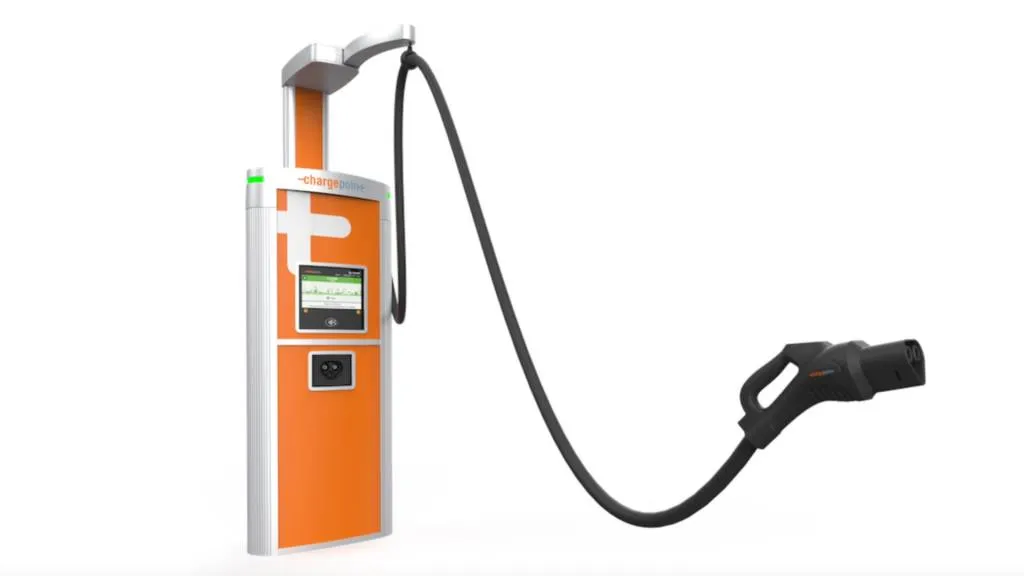

Megawatt charging for electric big rigs is starting to arrive
After a few years of slow rolling, megawatt charging for electric commercial trucks is arriving in a substantial way.
WattEV this week announced the opening of a solar-powered charging station for medium-duty and heavy-duty commercial trucks in Bakersfield, California. Announced in 2021, it’s the fourth station WattEV has opened, following three other California locations positioned near major trucking hubs and routes.
The Bakersfield station has three Megawatt Charging Standard (MCS) 1,200-kw chargers connected to its solar array, WattEV said in a press release. These can reduce the charge time for 300 miles of range to just 30 minutes, WattEV claims. The 119-acre site also has 16 dual-cord 360-kw chargers connected to the grid, as well as 15 single-cord 240-kw Combined Charging Standard (CCS) chargers.

ChargePoint EV charger with megawatt connector and cable
ChargePoint this week also announced support for the MCS. A compatible cable and connector will be available on the company’s Power Link 2000 stations, delivering up to 1.2 megawatts, according to a ChargePoint press release. The MCS is also designed for bidirectional charging, with an output of up to 3 megawatts, as well as marine and aviation charging applications, the company noted.
These announcements indicate that megawatt charging infrastructure development is finally picking up speed. The first megawatt-charging-ready station for electric semis opened in 2021, in Portland, Oregon, while megawatt charging was formalized as a standard in 2022.

Electric Island – Daimler Trucks North America and PGE – Portland OR
This may be just the start. A utility-based project helping to lay out and site these high-power stations kicked off in 2020, helping to pave the way for a network along the West Coast’s I-5 corridor. Truck maker Daimler is also planning a $650 million U.S. charging and hydrogen network for big rigs.
With refueling times for hydrogen fuel-cell semi trucks estimated at 20 minutes or more, megawatt charging creates a closer competition between fuel-cell and battery-powered trucks in the effort to decarbonize commercial vehicles—along with cause to wonder if the time for hydrogen fuel-cell semis has already come and gone.
Add a comment Cancel reply
Comments (0)
Related posts


Electric SUVs: Top 6 Models for Family Trips











